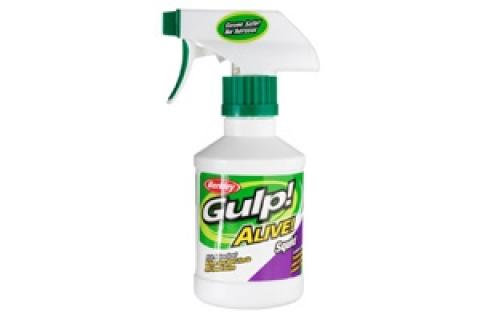

Even as temperatures rise in the spring, sometimes fish need to be "shaken" out of their winter lethargy. Colder temperatures slow them down, and fish can also be lazy. So it makes sense to start thinking "scents" right about now.
There is a ton of fish attractants on the market these days. On some level, because fish have a good sense of smell, all scents are effective to some extent; most will trigger some kind of visceral reaction and will get a fish to strike faster. Your job is to find out which ones are best for which species at certain times during the day.
Fish attractants are very fish-specific, which doesn't mean other species won't strike a fish-specific attractant. But you will find, too, some may have better results than others for those species they target. Remember, water conditions, sediment conditions after storms and temperature changes, both in the air and of the water, affect how fish will feed. Time of day is important; moon phase and wind equally important, just to mention the obvious variables that affect how fish will feed and will strike. So don't be shy, or even embarrassed, to try different manufacturers on the same outing. Test them head-to-head on two different rigs and you could see some obvious results. And don't forget to record those results in your fishing log, either. If you're like me, even if I'm out on the water the very next day, I'll forget what I used.
On my lake, Percy Priest Lake in Tennessee, I've specifically tested BioEdge fish attractants and actually have had some notable results. You can select from crayfish, night crawler, minnow or shiner scents for their freshwater species, as well as from a broad selection of saltwater fish attractants for those species for coastal anglers. And, each of their attractants is available in a liquid "potion" form or a "Chapstick-like" solid wand form. The liquid form works really effectively on the softer plastic baits, and the wand stick works particularly well on the hard baits, for example, the divers, jerk baits and the like.
Peter Cowen, president of BioEdge, reports a lot of their customers even using their attractants on their swivels and lines. The liquid attractants, in particular, help the baits glide a bit easier through the weeds, but it also sets up a trail. You can do the latter by squirting a couple of strong streams into the water and let the trolling motor or wind take the scent into the weeds.
What I like to do is pour some of the same scent into a Tupperware, for example, and keep it within dipping distance. After the fifth or sixth retrieve, if I think the scent is drifting off the bait, I dip and cast quickly, putting a lot more attractant onto the bait at once, then casting where I want that scent to be. Personally, I like to soak my bait in liquid bath. I'm not trying to be subtle about how much scent I use. When it comes to my artificial baits, I want them as stinky as possible. After all, it's not like wearing men's cologne; when fishing, more is best.
Believe me, it works.
You will find that fish attractants come in sprays, liquids and pastes. Berkley Gulp! Alive attractant, for example, comes in both liquid and spray. Others, like BioEdge and FishSticks Lure Enhancer, come in sticks.
I know some are also certain lubricants that can be used as fish attractants. Like anything else, try them, as well. Fishing is experimenting; catching is the end result.
- 4434 views

